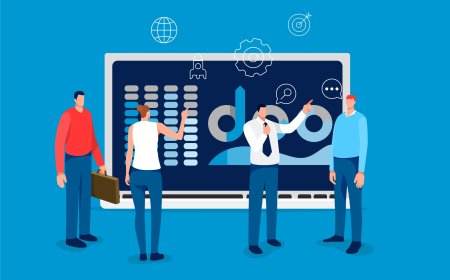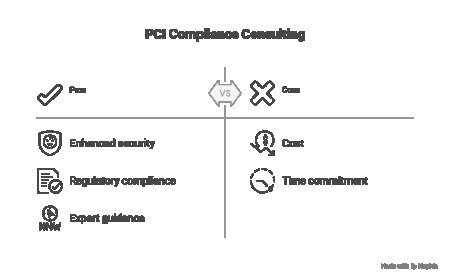What's the difference between Machine Learning and AI?
What's the difference between Machine Learning and AI? Learn how AI is broader and ML is a key subset powering it.

Introduction
In recent years, the terms Artificial Intelligence (AI) and Machine Learning (ML) have become buzzwords in tech circles, media, and everyday conversations. Often used interchangeably, many people are confused about what they actually mean and how they differ. While both concepts are closely related and sometimes overlap, they are not the same. Understanding the key differences between AI and ML can help you make informed decisionswhether youre a tech enthusiast, a student, or a business leader looking to adopt smart technologies. This article will break down the core ideas of AI and ML, highlight their differences, and explain how theyre shaping the future of technology.
Understanding Artificial Intelligence (AI)
What Is AI?
Artificial Intelligence is a broad field of computer science focused on building smart machines capable of performing tasks that typically require human intelligence. These tasks include reasoning, problem-solving, decision-making, visual perception, speech recognition, and language understanding.
Goals of AI:
-
Mimic human cognitive abilities
-
Make decisions based on data or logic
-
Solve complex problems independently
-
Interact naturally with humans
Types of AI:
-
Narrow AI Performs specific tasks (e.g., Siri, Alexa)
-
General AI Understands, learns, and functions like a human across various tasks (still theoretical)
-
Super AI Exceeds human intelligence (a futuristic concept)
Examples of AI Applications:
-
Self-driving cars
-
Facial recognition systems
-
Chatbots and virtual assistants
-
Fraud detection algorithms
-
Smart home devices
Understanding Machine Learning (ML)
What Is Machine Learning?
Machine Learning is a subset of AI that enables systems to learn from data and improve their performance over time without being explicitly programmed. Instead of writing code for every task, we feed data into algorithms that allow machines to learn patterns and make predictions or decisions.
Key Elements of ML:
-
Algorithms that find patterns in data
-
Data sets used for training models
-
Feedback loops for continuous learning
Types of Machine Learning:
-
Supervised Learning Models learn from labeled data (e.g., spam detection)
-
Unsupervised Learning Models find patterns in unlabeled data (e.g., customer segmentation)
-
Reinforcement Learning Models learn through trial and error (e.g., game AI)
Examples of ML Applications:
-
Email spam filters
-
Product recommendations (Amazon, Netflix)
-
Voice assistants improving over time
-
Stock market prediction tools
-
Medical diagnosis systems
The Key Differences Between AI and ML
1. Scope and Definition
-
AI is the broader concept of creating intelligent machines.
-
ML is a subset of AI that teaches machines to learn from data.
Think of AI as the goal, and ML as the method to achieve that goal.
2. Functionality
-
AI systems can mimic reasoning and decision-making.
-
ML systems focus primarily on pattern recognition and prediction.
3. Approach to Learning
-
AI may or may not involve learning from data. It can follow logic, rules, or predefined algorithms.
-
ML is entirely data-driven and improves through exposure to more information.
4. Human Interaction
-
AI tries to replicate human behavior and understanding.
-
ML does not necessarily mimic human thinkingit learns statistical correlations and patterns.
5. Examples in Practice
|
Feature |
Artificial Intelligence |
Machine Learning |
|
Voice Assistant Behavior |
Responding with empathy or context |
Learning new voice commands |
|
Finance |
Automated financial advisor |
Predicting stock market trends |
|
Healthcare |
Chatbot triage system |
Predicting disease outcomes |
|
Games |
Game strategy engine |
Learning player behavior |
How AI and ML Work Together?
Although distinct, AI and ML often work hand in hand. For example:
-
A virtual assistant like Siri uses AI to understand your question and ML to improve its response over time.
-
In a self-driving car, AI handles real-time decision-making, while ML processes past driving data to improve route predictions.
Why It Matters: The Impact on Jobs and Innovation
Job Market Trends
-
Roles in AI include AI engineers, research scientists, robotics developers
-
Roles in ML include ML engineers, data scientists, algorithm specialists
Future Opportunities
-
Healthcare: Predictive diagnosis and treatment personalization
-
Finance: Smarter fraud detection and risk modeling
-
Education: AI tutors and personalized learning platforms
-
Transportation: Fully autonomous vehicles
Learning the difference between AI and ML can guide your career, shape your startup idea, or help your company adopt the right technology.
Conclusion
While Artificial Intelligence and Machine Learning course in Chandigarh are closely connected, theyre not interchangeable. AI is the broader concept focused on simulating intelligence, while ML is the specific approach where machines learn from data. Together, they form the foundation of smart technologies transforming our world. Understanding the difference helps us use them betterwhether in everyday life, business innovation, or future career planning.
FAQs
Q1: Is machine learning a part of AI?
Yes, ML is a subset of AI focused on teaching machines to learn from data.
Q2: Can AI exist without machine learning?
Yes, AI systems can be rule-based and not use ML. However, ML enhances AIs capabilities.
Q3: Which is better to learn: AI or ML?
Start with MLits more practical and widely applied. Then move on to broader AI concepts.
Q4: Do AI and ML require coding skills?
Yes, knowledge of Python, R, or JavaScript is useful for both AI and ML.
Q5: What jobs use AI and ML?
Jobs include data scientist, ML engineer, AI researcher, business analyst, and NLP developer.








































